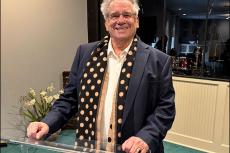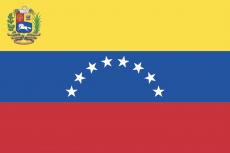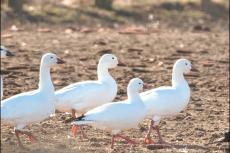“Dark sky” advocates who are concerned about East Hampton Town’s plan to convert all streetlights in the town to LEDs plan to voice their concerns to the town board when it meets at 11 this morning at Town Hall.
The New York Power Authority is assisting communities across the state in converting more than 200,000 streetlights to LEDs. The town has initiated the conversion program as part of its resilience and sustainability efforts, aiming to save electricity while improving lighting.
At its Aug. 2 meeting, the board heard a consultant’s recommendation that 682 fixtures be replaced with lights with a “color temperature” of 2,700 Kelvin. All but 41 of them would have a “cobra head” design. The higher the Kelvin, the more blue the light appears; lower Kelvin lighting is more amber in appearance.
BouJeloud Reed, senior lighting designer and engineering manager of Guth DeConzo Consulting Engineers, NYPA’s implementation contractor for the project, said that the recommendation takes into account pedestrian safety, energy savings, fixture performance, existing conditions and configuration, environmental impact, and Dark Sky compliance. The latter criterion refers to the International Dark-Sky Association’s seal of approval for outdoor lighting fixtures.
Susan Harder, who is the New York section leader of the International Dark-Sky Association, spoke against the recommendation on Aug. 2 and again on Aug. 9. She plans to return today.
The town of Pepperell, Mass., converted its streetlights from standard high-pressure sodium lights to 2200 kelvin LEDs, she said. “I saw and heard nothing” in Mr. Reed’s presentation “that would prevent you from using equipment similar to the town of Pepperell,” she told the board on Aug. 9. “The reduction of 500 kelvin . . . will reduce the amount of blue light. Blue light waves are harmful to our heath, vision, flora and fauna, and our view of the night sky.” Eye care professionals were also to communicate to the board “the dangers of blue light waves, which contributes to macular degeneration,” she said.
Leonard Green of Changehampton, which promotes biodiverse and sustainable landscaping and an expansion of “pollinator pathways” on eastern Long Island, warned of unintended consequences during the Aug. 9 meeting. “There is a consensus that higher-spectrum LEDs are harmful to biodiversity,” he told the board. “Fortunately, readily available lower-spectrum, amber LEDs offer a more ecological alternative.” The environmentally preferred standard is 2,200 Kelvin, he said, citing a number of scientific and conservation publications and conferences.
Also at the Aug. 9 meeting, Gloria Frazee, who complained about light trespass onto her property and said that anything more than the needed amount constitutes light pollution, illustrated her point by playing an excerpt of the song “Blinded by the Light” by Manfred Mann’s Earth Band on her mobile phone. “Just because you can throw up a lot of light doesn’t mean you have to,” she said. “The brighter the light against a dark background, the more the glare.”
Mr. Reed said in his presentation that his firm listens to a community’s desires and concerns “and then meets somewhere in the middle, making sure we provide a safe and sustainable solution.” The recommended design of 2,700 Kelvin “puts the least amount of blue light on the roadway,” he said.
But Ms. Harder, in subsequent emails to members of the energy and sustainability committee and other residents of East Hampton and Southampton Town, complained that NYPA has presented the town “with their ‘cookie-cutter’ version” of a streetlight upgrade program “which we are not obligated to accept. . . . We would have to live with the results of this project for decades as LEDs last a very long time.” As the state’s representative of the International Dark-Sky Association, she wrote, “I have heard from communities all over the state about their dissatisfaction with the NYPA retrofit, as their choices have increased glare, light trespass, and skyglow.”
Even 2,200 Kelvin is too warm in some instances, she said, recommending 1,800 Kelvin near nature preserves, waterways, and beaches.



